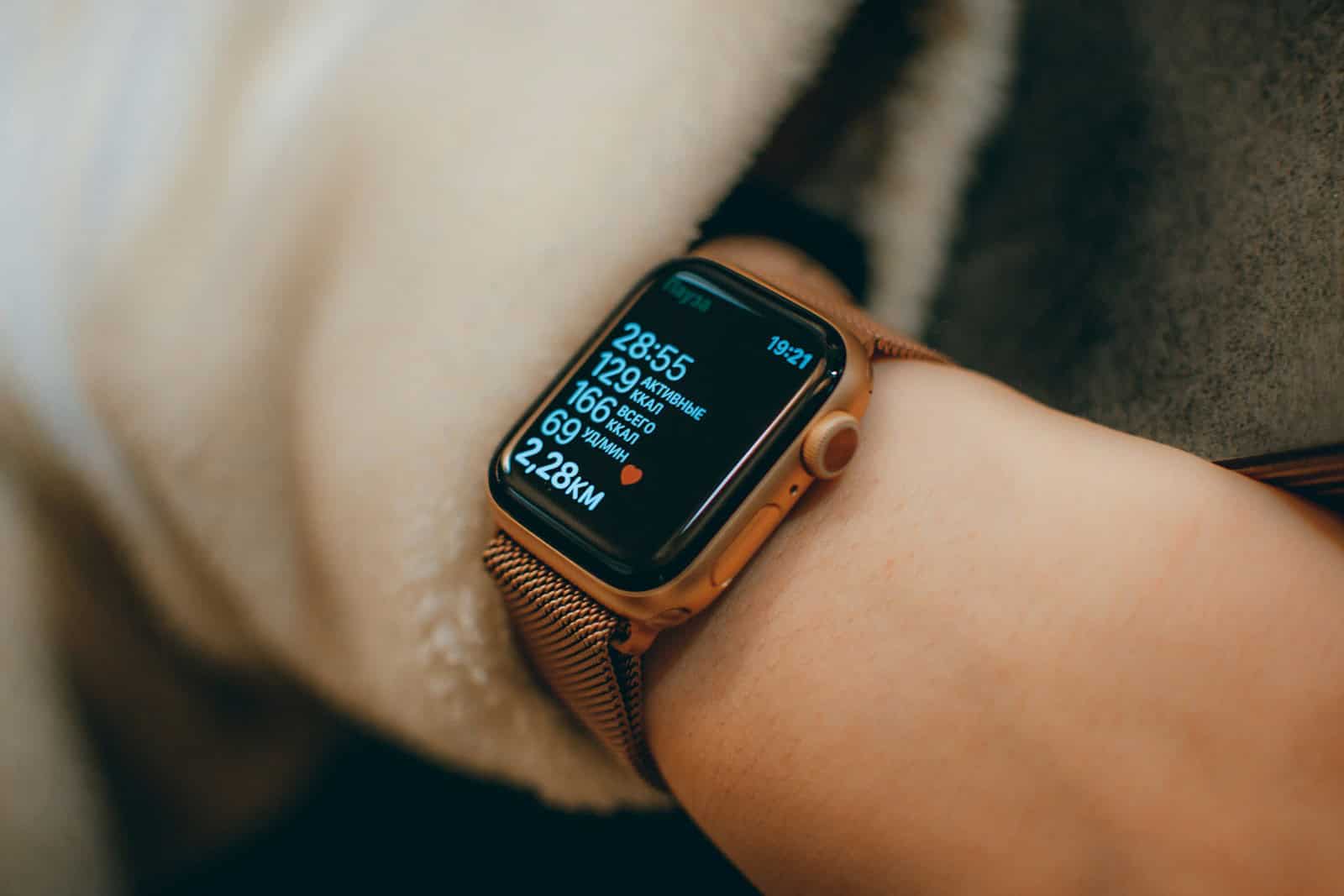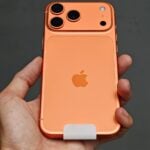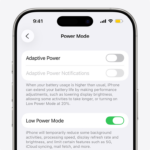Apple has long positioned the Apple Watch as a key player in digital health, and its next major leap could be one of the most transformative yet: non-invasive blood glucose monitoring. For the millions of people living with diabetes or prediabetes, this feature would mark a game-changing shift from needles and sensors to seamless, pain-free tracking on the wrist. But how close are we really?
A Glimpse Into Apple’s Vision
Apple has been quietly working on non-invasive glucose tracking technology for over a decade—dating back to the vision Steve Jobs reportedly had to revolutionize personal health monitoring. In 2023, Bloomberg reported that Apple had reached a major milestone: a working proof-of-concept using a method called optical absorption spectroscopy. This technology shines light through the skin to measure glucose levels in interstitial fluid, offering a needle-free approach.
However, turning that lab innovation into a feature that fits inside a sleek Apple Watch is proving to be the real challenge. As of May 2025, Apple’s glucose tech is still several years away from becoming commercially viable. The complexity lies in miniaturizing the sensors and ensuring clinical-grade accuracy—especially important when lives depend on it.
Samsung and the Race to Be First
Apple isn’t alone in the race. Samsung has also been developing a non-invasive glucose monitor for its Galaxy Watch line. Industry analysts believe Samsung may launch their version sooner, but accuracy and regulatory approval remain hurdles across the board.
Real Glucose Tracking on Apple Watch Today
While Apple’s internal sensor may still be in the works, real-time glucose tracking on Apple Watch is already possible—thanks to third-party CGM (Continuous Glucose Monitoring) integrations.
- Dexcom G7: Now offers direct-to-Apple Watch support via Bluetooth, meaning users no longer need to carry their iPhone to view real-time glucose data. This is a huge win for people on the go, especially athletes and children.
- FreeStyle Libre (via GlucoWatch and other apps): With the right setup, users of Libre 2 or Libre 3 sensors can view blood sugar data right on their Apple Watch.
- Tandem and Medtronic CGMs: While not yet offering native Apple Watch support, they can still push data to the iPhone, which in turn syncs with the Watch.
These integrations, while dependent on third-party hardware, already provide meaningful tools for diabetes management right from the wrist.
Enter Project Mulberry: Apple’s Bigger Health Ambitions
Beyond hardware, Apple is laying the groundwork for a more holistic approach to health. “Project Mulberry” is an upcoming initiative rumored to be an AI-powered health coaching service. It will reportedly combine Apple Watch data (like heart rate, activity, and sleep) with nutrition tracking, medication reminders, and potentially glucose data once available—turning the Watch into a 24/7 personal wellness assistant.
Regulatory Path and What To Expect Next
To offer native, FDA-approved glucose monitoring, Apple will need to clear significant regulatory hurdles. Experts suggest we may see Apple first release a prediabetes management tool before launching a full-scale diabetes solution—much like how they rolled out ECG and irregular rhythm notifications in stages.
In all likelihood, we won’t see native Apple glucose monitoring before 2027 or later. But every update to the Apple Watch’s sensors and health software gets us one step closer.
Apple Watch-Compatible CGM Systems
| CGM System | Apple Watch Compatibility | Real-Time Alerts | Sensor Wear Duration | Calibration Required | Notable Features |
|---|---|---|---|---|---|
| Dexcom G7 | Direct Bluetooth connection (no iPhone needed) | Yes | 10 days | No | FDA-cleared, high accuracy, smallest Dexcom sensor |
| FreeStyle Libre 2 | Works via third-party apps (e.g., GlucoWatch) | Yes (via apps) | 14 days | No | Affordable, wide adoption, no calibration needed |
| FreeStyle Libre 3 | Works via third-party apps (e.g., Gluroo, xDrip+) | Yes (via apps) | 14 days | No | Smaller and more accurate than Libre 2 |
| Medtronic Guardian Connect | Indirect – Data synced through iPhone to Watch | Yes | 7 days | Yes | Predictive alerts, optional manual calibration |
| Eversense E3 | Indirect – Requires iPhone app, syncs data to Watch | Yes | 180 days (implantable) | Yes (twice per day) | Implantable sensor, long-term use, minimal maintenance |
The Bottom Line
Apple is making real progress on non-invasive blood glucose monitoring, but the finish line is still a few years out. In the meantime, Apple Watch users can take advantage of robust third-party CGM integrations like Dexcom G7 and Libre 3 to manage their health more conveniently than ever before. And with AI-driven features like Project Mulberry on the horizon, Apple’s vision for holistic, real-time health management is starting to take shape—even if glucose tracking isn’t fully there yet.
Key Takeaways
- Apple Watch may at some point offer monitoring of blood glucose without finger pricks or invasive methods, but that technology is a ways away
- Dexcom G7 sensors already connect to Apple Watch through Bluetooth for easy glucose checking.
- The growing link between Apple Watch and glucose monitoring could transform diabetes management.
Evolution of the Apple Watch
Apple’s flagship wearable has undergone significant transformations since its debut, particularly in its health monitoring capabilities. These advancements have positioned the Apple Watch as a potential game-changer in personal health technology, especially with the company’s ongoing efforts to develop non-invasive glucose monitoring.
From Series 7 to Series 8
The Apple Watch Series 7 marked a major step forward with its larger display and improved durability. It featured an enhanced always-on retina display with nearly 20% more screen area than the Series 6, making health data easier to read and interact with.
When Apple released the Series 8 in 2022, it added temperature sensing capabilities—a first for the device. This new sensor enabled advanced cycle tracking features and better sleep monitoring.
The Series 8 also introduced more robust crash detection technology, leveraging improved gyroscopes and accelerometers to detect severe car crashes and automatically call emergency services when needed.
Both models continued Apple’s commitment to health tracking with features like blood oxygen monitoring and ECG. However, blood glucose monitoring remained elusive, despite being one of the most requested features by users with diabetes.
The Role of Rockley Photonics
Rockley Photonics has been a crucial partner in Apple’s quest to add advanced health monitoring to the Apple Watch. The company specializes in photonics-based health monitoring technology that can measure multiple biomarkers through the skin.
Their “clinic on the wrist” technology uses infrared spectrophotometry, which can potentially detect blood glucose levels non-invasively. This partnership represents Apple’s strategic investment in cutting-edge sensor technology.
Apple reportedly invested heavily in Rockley’s research, with the semiconductor manufacturer becoming a key supplier for the components needed in next-generation health sensors.
Rockley’s advanced sensor modules use a broader range of wavelengths than current Apple Watch sensors, potentially allowing for monitoring of glucose, alcohol levels, and blood pressure. Their technology could be the breakthrough Apple needs to finally bring non-invasive glucose monitoring to consumers.
Innovation in Wearable Technology
Apple’s partnership with TSMC (Taiwan Semiconductor Manufacturing Company) has been essential for advancing the Apple Watch’s capabilities. TSMC’s cutting-edge chip manufacturing enables Apple to pack more processing power into the watch’s small form factor.
The S-series chips powering Apple Watches have grown more efficient with each generation, allowing for better battery life despite increasing functionality. This efficiency is crucial for supporting power-hungry health monitoring features.
Apple has been working on a moonshot-style project dating back to the Steve Jobs era: continuous, non-invasive blood glucose monitoring. This technology would transform diabetes care for millions.
While competitors focus on integrating existing monitoring solutions, Apple aims to create a truly non-invasive method using optical absorption spectroscopy. Recent reports indicate Apple has made significant progress, with the company potentially able to shake up the CGM market with its innovative approach to glucose monitoring through the Apple Watch.
Glucose Monitoring Technology
Tracking blood sugar levels has evolved dramatically from finger pricks to advanced wearable systems. Modern glucose monitoring technologies offer people with diabetes more freedom while providing detailed data about their health.
The Basics of Blood Glucose Levels
Blood glucose is the main sugar found in your bloodstream. It comes from the food you eat and serves as your body’s main energy source. Normal blood glucose levels typically range between 70-99 mg/dL when fasting and less than 140 mg/dL two hours after eating.
For people with diabetes, maintaining healthy glucose levels is crucial. When levels go too high (hyperglycemia) or too low (hypoglycemia), serious health problems can occur.
Traditional monitoring involves pricking a finger to draw blood, placing a drop on a test strip, and using a glucose meter to get a reading. This method shows glucose levels at a single moment in time.
The drawback? These snapshots don’t show the full picture of how glucose levels change throughout the day.
Continuous Glucose Monitors (CGMs)
Continuous glucose monitors (CGMs) represent a major leap forward in diabetes management. Unlike finger prick tests, CGMs track glucose levels 24/7, providing near real-time data.
A typical CGM system includes:
- A tiny sensor inserted under the skin
- A transmitter attached to the sensor
- A receiver or smartphone app to display readings
These systems measure glucose in interstitial fluid, the fluid between cells, rather than directly from blood. Readings update every few minutes, creating a comprehensive picture of glucose patterns.
Modern CGMs like the Dexcom G7 can connect directly to Apple Watch, allowing users to see their levels with a quick glance at their wrist. This integration makes monitoring much more convenient.
CGMs also offer alert systems for high or low glucose levels and can share data with doctors or family members.
Noninvasive Monitoring Advances
The holy grail of glucose monitoring is completely noninvasive technology—measuring blood sugar without needles or sensors inserted under the skin. Several approaches are being explored:
Optical methods use light to detect glucose through the skin. Different wavelengths of light interact with glucose molecules in unique ways.
Transdermal extraction pulls interstitial fluid through the skin without needles. This fluid can then be analyzed for glucose content.
Radio wave/electromagnetic approaches measure changes in electrical fields affected by glucose concentration.
While Apple has been testing systems using lasers that shine light into the skin to detect blood sugar levels, truly noninvasive monitoring remains challenging. Many companies have tried and failed to create accurate wearable glucose monitors.
The biggest hurdle? Getting consistent, accurate readings through the skin without direct access to blood or interstitial fluid.
Role of Optical Absorption Spectroscopy
Optical absorption spectroscopy forms the backbone of many emerging noninvasive glucose monitoring technologies. This technique examines how glucose molecules absorb and scatter light.
When infrared light passes through tissue containing glucose, specific wavelengths are absorbed. By measuring this absorption pattern, scientists can estimate glucose concentration.
The challenge lies in isolating the glucose signal from other substances in the body that also absorb light. Blood, water, fat, protein, and even melanin can interfere with readings.
Advanced algorithms help filter out these “noise” factors to improve accuracy. Apple’s approach reportedly uses specialized lasers and sensors that might overcome some of these obstacles.
While commercial products claiming to offer true blood sugar monitoring on smartwatches exist, independent testing shows most aren’t yet reliable enough for medical decisions. The technology continues to improve rapidly, though, bringing us closer to the goal of painless glucose monitoring.
Integration with Apple Ecosystem
The Apple Watch glucose monitoring capabilities are tightly woven into Apple’s broader ecosystem, creating seamless connections between devices and apps for better health management. These integrations make tracking glucose levels more convenient while enhancing the usefulness of collected data.
iPhone and Apple Watch Synchronization
The Apple Watch works closely with iPhone to create a complete glucose monitoring experience. When a user checks their glucose level on their watch, this data automatically syncs to their paired iPhone.
With the Dexcom G7 system, users enjoy direct Bluetooth connectivity to their Apple Watch. This feature means people can check glucose readings even when their iPhone isn’t nearby.
iOS updates have steadily improved this connection. Recent versions like iOS 17.4 enhanced performance, while the upcoming iOS 18 may bring additional glucose monitoring improvements.
Complications on the watch face show glucose readings at a glance. Users can customize which data appears, making it easier to track trends throughout the day without opening apps.
Apps and App Store Changes
The App Store offers various glucose monitoring apps that work with Apple Watch. These apps range from those that connect to physical glucose monitors to ones that help track manually entered readings.
Third-party continuous glucose monitoring (CGM) systems like Dexcom and One Drop provide dedicated Apple Watch apps. These apps display real-time glucose data directly on the wrist.
Recent App Store changes have made finding glucose monitoring apps easier. Apple created a special health category that highlights these tools for users with diabetes.
App developers must follow Apple’s strict privacy guidelines. This ensures sensitive health information stays secure while moving between devices in the ecosystem.
Health App and Data Trends
The Apple Health app serves as the central hub for all glucose data. It collects readings from the Apple Watch and connected monitoring devices to create comprehensive reports.
Users can view glucose trends over time through simple charts and graphs. The Health app organizes this information by day, week, month, or year to help spot patterns.
Health app notifications alert users to concerning glucose levels. These alerts can appear on both iPhone and Apple Watch, ensuring important warnings aren’t missed.
Siri integration allows for voice commands related to glucose data. Users can ask questions like “What’s my glucose trend today?” for hands-free information access.
The Health app can share glucose data with healthcare providers through the Health Records feature. This creates a more complete picture of health between medical visits.
Health Monitoring Features
The Apple Watch offers extensive health tracking capabilities that go far beyond basic step counting. These features allow users to monitor vital health metrics in real-time and receive alerts for potential health concerns.
Heart Rate and Blood Oxygen Levels
The Apple Watch includes an optical heart rate sensor that continuously tracks your heart rate throughout the day. This sensor uses green LED lights paired with light-sensitive photodiodes to detect blood flow through your wrist.
Users can view their current heart rate, resting rate, and walking average directly on the watch face. The device also sends notifications if your heart rate rises above or falls below expected levels during periods of inactivity.
For oxygen monitoring, the Apple Watch uses red and infrared light sensors to measure the amount of oxygen in your blood. This blood oxygen measurement feature helps track your overall wellness and fitness levels.
The measurements happen automatically in the background, with results viewable in the Blood Oxygen app. Normal readings typically range between 95-100%, with lower readings potentially indicating health issues that might need medical attention.
ECG and Atrial Fibrillation Detection
The ECG (electrocardiogram) feature on newer Apple Watch models allows users to take a medical-grade heart reading in just 30 seconds. This feature works by creating a closed circuit between the Digital Crown and the back sensor.
Users simply need to rest their finger on the Digital Crown to start the test. The watch then creates a waveform similar to a single-lead ECG used by medical professionals.
The watch specifically screens for atrial fibrillation (AFib), an irregular heart rhythm that can lead to serious health complications. When detected, the watch alerts the user and stores the reading in the Health app.
This feature has received FDA clearance and has been credited with identifying heart issues in many users who were unaware of their condition. Medical professionals can review these recordings when shared through the Health app.
Body Temperature and Blood Pressure
Recent Apple Watch models include a body temperature sensor that works while you sleep. Unlike a traditional thermometer, it measures relative temperature changes rather than providing an exact reading.
This feature is particularly useful for women tracking their menstrual cycles, as slight temperature shifts can indicate ovulation. The watch establishes your baseline temperature over time and alerts you to any significant deviations.
Blood pressure monitoring is not yet available directly on the Apple Watch. However, third-party cuffs that connect to the Apple Health ecosystem can sync their readings with your watch data.
Apple is reportedly working on adding direct blood pressure monitoring capabilities in future models. This would use pressure sensor technology to provide readings without requiring a separate cuff.
Additional Health Metrics
The Apple Watch tracks several other health indicators beyond the core vitals. Sleep tracking uses the accelerometer and heart rate sensor to monitor your sleep patterns, showing time in different sleep stages.
For fitness enthusiasts, the watch measures cardio fitness levels (VO2 max) during outdoor walks, runs, or hikes. This metric helps users understand their overall fitness level compared to people of similar age and gender.
Newer models also track respiratory rate (breaths per minute) during sleep. This data can spot patterns that might indicate sleep apnea or other breathing disorders.
While the Apple Watch doesn’t yet directly monitor glucose levels, it can connect with compatible continuous glucose monitoring systems like the Dexcom G7, displaying real-time blood sugar data directly on your wrist without needing to check your phone.
Apple Watch as a Tool for Diabetes Management
The Apple Watch has become a game-changing device for diabetes management, offering features that help users track glucose levels and receive timely alerts about dangerous blood sugar changes.
Type 1 and Type 2 Diabetes Use Cases
People with Type 1 diabetes, who don’t produce insulin, can use Apple Watch with continuous glucose monitoring systems like Dexcom G7. This integration allows users to see their numbers right on their wrist without checking a separate device.
For Type 2 diabetes patients, who have insulin resistance, the watch serves as a convenient tracking tool that helps monitor how food, exercise, and medication affect blood sugar levels throughout the day.
The Dexcom G7 is now the first glucose monitor that connects directly to Apple Watch without needing an iPhone nearby. This freedom means diabetics can check their numbers during workouts, meetings, or anytime their phone isn’t handy.
Even those with prediabetes can benefit from Apple’s technology, as the company has been testing apps specifically designed for prediabetes management.
Empowering Diabetics with Real-Time Data
The Apple Watch provides diabetics with instant glucose readings right on their wrist. Users can view blood sugar directly on the watch face, making checks quick and discreet.
This constant access to data helps users:
- Identify how specific foods affect their glucose
- Understand their body’s response to exercise
- Recognize patterns in their glucose levels
- Make informed decisions about insulin doses
The convenience factor can’t be overstated. Before smartwatch integration, people with diabetes had to carry separate monitors or constantly check their phones. Now, a quick glance at their wrist gives them the vital information they need.
Real-time data also helps strengthen the relationship between patients and their healthcare providers, as more complete glucose records lead to better treatment plans.
Predictive Alerts and Trends Analysis
One of the most valuable features is the ability to receive alerts when glucose levels are trending too high or low. These warnings give users precious minutes to take action before a dangerous situation develops.
The watch can display glucose trends with helpful arrows showing if levels are:
- Rising rapidly ↑↑
- Rising gradually ↑
- Stable →
- Falling gradually ↓
- Falling rapidly ↓↓
This predictive capability helps prevent emergencies by alerting users to take sugar when levels drop or insulin when they spike.
Over time, the data collected creates comprehensive reports showing patterns in how a user’s body responds to various factors. These insights help diabetics understand their unique glucose patterns and make better daily choices.
Apple’s algorithms can even learn a user’s typical ranges and provide increasingly personalized alerts as the system gets to know their body’s specific responses.
Apple’s Research and Development Drive
Apple has invested years of research into creating a non-invasive blood glucose monitoring system for the Apple Watch. This ambitious project dates back to the Steve Jobs era and could transform diabetes care for millions of people worldwide.
Exploratory Design Group’s Contribution
The Exploratory Design Group, a secretive team within Apple, has been leading the glucose monitoring project. This group works on advanced technologies that might take years or even decades to reach consumers. Their approach uses silicon photonics and a technique called optical absorption spectroscopy to measure glucose levels through the skin.
The team has made significant progress in miniaturizing this technology. They’ve worked to fit complex equipment that would normally take up a whole table into a device small enough to wear on your wrist.
Apple recently appointed a new chief to lead this team, showing the company’s continued commitment to the project despite its challenges.
Proof-of-Concept and Challenges
Apple has developed a working proof-of-concept device for needle-free blood glucose monitoring. This prototype demonstrates that the technology can work, though it’s still far from ready for consumer use.
The main challenges include:
- Achieving consistent accuracy across different skin types
- Miniaturizing the sensors to fit in a watch
- Extending battery life while running power-hungry sensors
- Meeting strict regulatory standards for medical devices
The goal is extremely ambitious – to analyze blood glucose without pricking the skin. Success would mark a major breakthrough in diabetes management.
Collaborating with Medical Research
Apple has formed partnerships with medical researchers and institutions to validate its glucose monitoring technology. These collaborations help ensure the system meets clinical standards and provides useful data for users and healthcare providers.
The company has been conducting clinical trials to test both accuracy and usability. Apple is also exploring ways to use the data to detect prediabetes, potentially helping users take preventive measures before developing full diabetes.
Medical experts consider this technology potentially groundbreaking for diabetes care. If successful, it could eliminate the need for painful finger pricks and expensive test strips used by millions of people daily.
Apple’s approach combines hardware innovation with software that interprets the data and makes it actionable for users.
Future Prospects and Release Information
The Apple Watch glucose monitoring feature stands as one of the most anticipated health technologies in wearable devices. Several reports point to significant progress in non-invasive blood glucose monitoring technology that could revolutionize diabetes management without the need for skin piercing.
Anticipated Release Dates
The Apple Watch Series 11 appears to be the most likely candidate for introducing glucose monitoring capabilities. Based on Apple’s typical release schedule, we can expect this device around September 2025. However, some leaks suggest this feature might still be in development.
Apple remains tight-lipped about exact timelines. Many industry experts believe full glucose monitoring might not arrive until 2026 or later.
The technology requires extensive testing and FDA approval before release. This regulatory process adds significant time to the development cycle.
Some Reddit discussions indicate that accurate real-time glucose monitoring might take up to five years to implement properly.
Bloomberg Reports and Market Speculation
Bloomberg’s reporting has been instrumental in tracking Apple’s progress on this technology. Their industry sources indicate Apple has made substantial advances in non-invasive monitoring methods using specialized sensors.
Market analysts predict the feature could significantly boost Apple Watch sales, potentially adding 10-15 million new users specifically interested in glucose monitoring.
Samsung has recently revealed its own progress in this area, creating competitive pressure for Apple to deliver.
The technology reportedly uses a system similar to “Rarelight” that employs specialized light wavelengths to measure glucose levels through the skin without drawing blood.
Partnerships with established medical device companies like Dexcom might play a key role in Apple’s strategy to ensure accuracy and reliability.
Impact on Consumer Healthcare Industry
The introduction of non-invasive glucose monitoring could transform diabetes management for over 500 million people worldwide. Daily finger pricks would no longer be necessary for many patients.
Healthcare costs could decrease significantly as continuous monitoring leads to better glucose control and fewer complications.
Insurance companies are already discussing coverage options for these devices when they become available. Several major insurers see potential long-term savings.
Medical professionals remain cautiously optimistic but stress that any new technology must meet stringent accuracy requirements before replacing traditional methods.
The technology could eventually expand to Apple’s other product lines. Some speculate that future versions of Apple Vision Pro might incorporate health monitoring capabilities including glucose tracking.
This development represents a shift in consumer health devices from fitness tracking to medical-grade monitoring that can inform healthcare decisions.
Apple Watch Glucose Monitor Technical Specifications
The Apple Watch glucose monitoring capabilities combine advanced battery management, seamless connectivity options, and user-centered design elements to create an effective health monitoring solution. Each component works together to provide reliable glucose readings while maintaining the sleek profile Apple users expect.
Battery Life and Device Performance
The Apple Watch glucose monitor offers up to 18 hours of battery life with regular glucose monitoring enabled. This includes taking readings every 15 minutes throughout the day without significant impact on overall watch performance.
Key performance metrics include:
- Sampling rate: Readings every 5-15 minutes (user adjustable)
- Accuracy rate: ±10% compared to traditional finger-prick tests
- Processing time: Under 3 seconds for results display
The monitor uses an optimized power management system that balances glucose sensing with other watch functions. This system reduces battery drain during continuous monitoring periods.
Users can expect approximately 40% less battery consumption compared to earlier CGMs that required separate devices. The low-power sensing mode activates only when needed, preserving battery for essential functions.
Bluetooth Connectivity and Data Transmission
The glucose monitor utilizes dedicated Bluetooth connections to transmit data directly to the Apple Watch. This connection works independently from the iPhone, allowing users to monitor glucose levels even when their phone isn’t nearby.
Connectivity features include:
- Bluetooth 5.3 support for faster data transmission
- Range: Up to 30 feet between sensor and watch
- Encryption: End-to-end data protection
- Sync frequency: Real-time alerts with background syncing every 5 minutes
The system automatically backs up readings to the Health app when the iPhone is within range. This creates a comprehensive health profile that can be shared with healthcare providers.
Data transmission occurs with minimal interference from other Bluetooth devices. The watch prioritizes glucose monitor connections over other paired accessories during critical readings.
Wearable Design and User Experience
The glucose monitoring system integrates with the Apple Watch’s sleek design, maintaining its thin profile while adding powerful health features. The sensor attachment is discreet and lightweight, adding less than 4 grams to the overall weight.
User-friendly features include:
- Customizable alerts for high and low glucose thresholds
- Haptic feedback for silent notifications
- Glance-able complications on watch faces
- Water-resistant design (up to 50 meters)
The interface displays glucose trends with color-coded indicators that are easy to understand at a glance. Users can swipe to view detailed graphs showing patterns over hours, days, or weeks.
The system works seamlessly with Apple Health, allowing correlation between glucose levels and other metrics like activity, sleep, and food intake. This comprehensive approach helps users better understand their body’s glucose responses.
Supporting Technologies and Peripheral Devices
The Apple Watch glucose monitoring experience extends beyond the watch itself through an ecosystem of connected technologies. These supporting devices and software enhance monitoring capabilities, improve data sharing, and create a more seamless experience for users managing diabetes.
The Role of HomePod and CarPlay
HomePod integrates with glucose monitoring systems to provide voice-activated access to glucose readings. Users can simply ask, “Hey Siri, what’s my current glucose level?” to get immediate information without checking their watch or phone.
CarPlay compatibility allows drivers to view glucose data on their vehicle’s dashboard display. This critical feature helps people with diabetes stay aware of their levels while driving. The system can provide audio alerts for dangerous glucose trends, enhancing safety on the road.
Some glucose monitoring apps can:
- Send automatic announcements through HomePod when readings are out of range
- Use CarPlay to display trend graphs during longer drives
- Allow voice commands to log insulin doses or food intake
These integrations are especially helpful for users who need hands-free options or want to limit how often they check their devices.
Integration with Other Apple Devices
The Apple ecosystem provides seamless glucose data sharing across multiple devices. The iPad Mini offers a larger screen for detailed glucose trend analysis, making pattern recognition easier for users and healthcare providers.
Data syncs automatically through iCloud, ensuring consistent readings on all devices. This means glucose readings taken with an Apple Watch appear instantly on iPhones and iPads.
Family sharing features allow parents to monitor their children’s glucose levels remotely. The Health app serves as a central hub for all diabetes-related data, including:
- Glucose readings
- Insulin doses
- Carbohydrate intake
- Physical activity
Apple’s SharePlay feature enables users to review glucose data with healthcare providers during telehealth appointments. This real-time collaboration improves diabetes management and medical support.
Third-Party Apps and Accessories
The App Store hosts numerous specialized glucose monitoring applications that expand the basic capabilities of Apple Watch. Popular apps include those from Dexcom, which offers direct connection to Apple Watch without requiring an iPhone.
Hardware accessories complement the Apple Watch monitoring experience:
| Accessory Type | Function | Benefits |
|---|---|---|
| Smart Insulin Pens | Track insulin doses | Automatic logging to Health app |
| Continuous Glucose Monitors | Provide real-time readings | Direct Apple Watch connection |
| Lancet Devices | Blood sampling | Sync readings via Bluetooth |
Third-party repair services like iFixit provide maintenance options for glucose monitoring hardware. These services help extend the life of monitoring equipment, making diabetes management more affordable.
App developers often work with Apple’s Support Team to ensure deep integration with the Health app. This collaboration creates a better user experience and more reliable glucose tracking capabilities.
Frequently Asked Questions
Many Apple Watch users want to know about glucose monitoring capabilities. Here are answers to common questions about tracking blood sugar with Apple Watch devices.
When will the glucose monitoring feature be available on the Apple Watch?
Currently, no Apple Watch model offers built-in glucose monitoring as a native feature. Apple has not officially announced when or if this feature will be available in future models.
Rumors suggest Apple is working on non-invasive glucose monitoring technology, but no release date has been confirmed. This remains one of the most anticipated health features for future Apple Watch generations.
How much will the glucose monitoring feature for the Apple Watch cost?
Since Apple hasn’t released a native glucose monitoring feature, there is no official pricing. When it eventually launches, it may be included in the standard watch price or offered as a premium feature.
For now, users need separate glucose monitoring systems that work with the Apple Watch. These third-party systems like Dexcom have their own pricing structures, typically including initial sensor costs and ongoing supplies.
Which apps are compatible with the Apple Watch for glucose monitoring?
Several diabetes management apps work with the Apple Watch. Dexcom offers an app that displays glucose readings from their continuous glucose monitoring (CGM) systems on your watch.
Other compatible apps include Sugarmate, One Drop, and Glucose Buddy. These apps connect to various CGM devices and display real-time data, trends, and alerts on your Apple Watch screen.
Is the Dexcom G7 compatible with the Apple Watch for glucose tracking?
Yes, the Dexcom G7 is fully compatible with Apple Watch. The system offers a Direct to Apple Watch feature that connects the G7 sensor directly to your watch through Bluetooth.
This allows users to see glucose readings without needing their phone nearby. The direct connection provides real-time glucose data and customizable alerts right on your wrist.
Can the Apple Watch measure glucose levels independently without a phone?
The Apple Watch cannot measure glucose levels on its own. The watch lacks the hardware needed to directly test blood sugar.
However, with certain systems like the Dexcom G7, the watch can receive glucose data directly from the sensor without needing a phone nearby. The actual measurement still happens through an external sensor worn on the body.
Are there any smartwatches currently available that can measure blood sugar levels?
No smartwatch on the market can directly measure blood sugar levels without an external sensor. This includes the Apple Watch and all competitor devices.
All current solutions require external CGM sensors like those from Dexcom, Abbott (FreeStyle Libre), or Medtronic. These sensors use NFC or Bluetooth technology to send glucose readings to compatible smartwatches.







